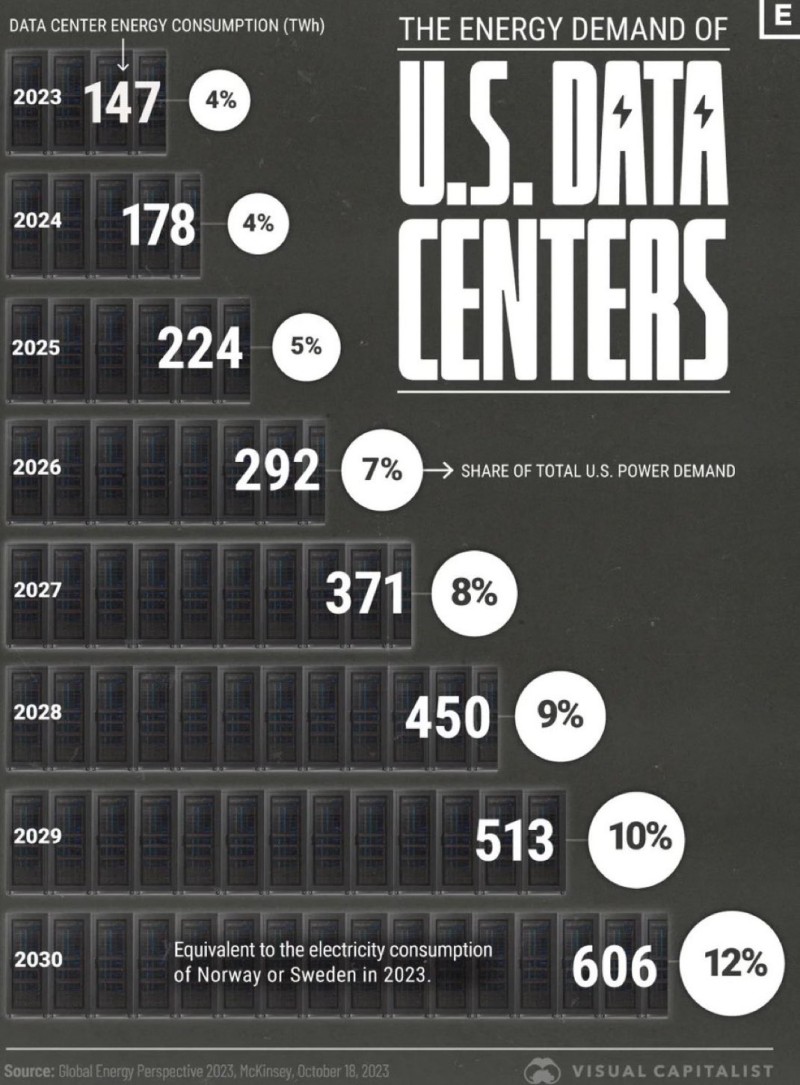As artificial intelligence expands at breakneck speed, its energy footprint has become impossible to ignore. The numbers tell a stark story: what once seemed like a manageable infrastructure challenge is rapidly evolving into a full-blown energy crisis that could reshape American power consumption for decades to come.
A recent visualization from Visual Capitalist, drawing on McKinsey's Global Energy Perspective 2023, reveals a staggering trajectory that few anticipated just years ago. The data paints a clear picture of an industry whose appetite for electricity is growing faster than almost anyone predicted.
The Explosive Growth in AI Energy Demand
Trader and market analyst Shay Boloor recently highlighted this dramatic shift, noting that AI data centers will consume 12% of all U.S. power by 2030. He pointed out something crucial that many have overlooked: "Every new AI data center is a power plant disguised as compute—and the grid is quietly becoming the new bottleneck in AI scale."

U.S. data centers consumed 147 terawatt-hours of electricity in 2023, representing just 4% of the country's total power demand. By 2030, that figure is expected to surge to 606 TWh—12% of total consumption, roughly equivalent to Norway or Sweden's entire electricity usage in 2023.
The progression shows alarming acceleration:
- 2023: 147 TWh (4%)
- 2024: 178 TWh (4%)
- 2025: 224 TWh (5%)
- 2026: 292 TWh (7%)
- 2027: 371 TWh (8%)
- 2028: 450 TWh (9%)
- 2029: 513 TWh (10%)
- 2030: 606 TWh (12%)
The steepest increases hit between 2025 and 2030, driven by AI model training, inference operations, and exploding cloud services. We're not talking about gradual growth—this is exponential demand colliding with finite infrastructure.
When the Grid Becomes the Ceiling
The rise of AI has turned electricity into a strategic weapon. The real bottleneck in AI scaling isn't silicon anymore, it's not even compute efficiency—it's raw power availability. A single hyperscale AI facility running chips like NVIDIA's H100s or AMD's MI300s can pull as much electricity as a small city, straining local grids and forcing utilities into emergency expansion mode.
This shift is already rewriting corporate strategy. Tech giants are bypassing traditional power markets entirely, cutting deals directly with energy producers and locking in long-term contracts for nuclear, hydro, and renewable capacity. They're not just buying electricity—they're securing their competitive future.
The economic ripple effects are massive. Utilities face pressure to expand generation capacity at unprecedented speed. Energy investors see trillion-dollar opportunities in grid upgrades and storage solutions. Data center operators scramble to implement efficient cooling and hardware systems. Meanwhile, policymakers watch in dismay as AI threatens to erase a decade's worth of renewable energy gains.
As one market observer put it: "The next trillion in market cap belongs to whoever controls the power that feeds the chips." Energy is becoming the new moat in the AI arms race, and companies are realizing it fast.
 Usman Salis
Usman Salis

 Usman Salis
Usman Salis


